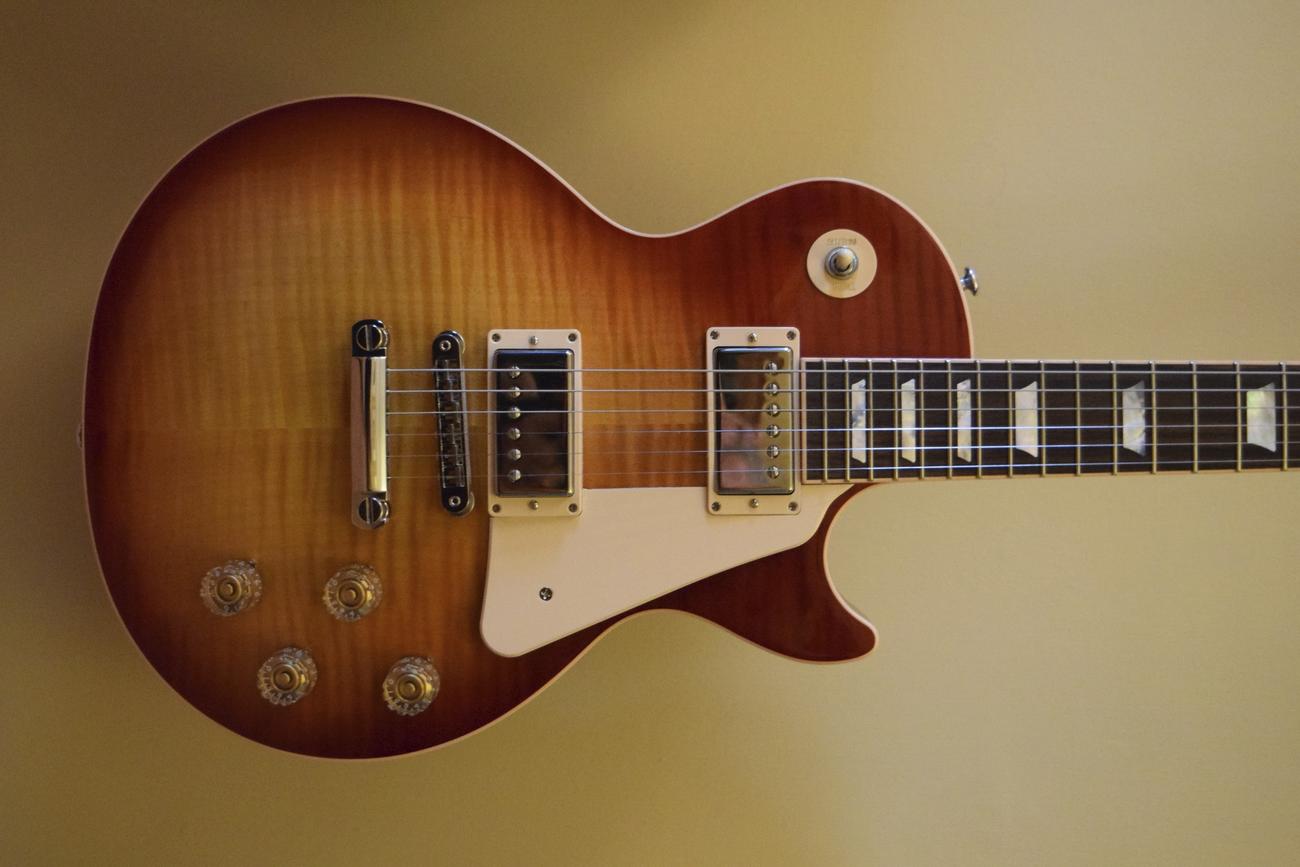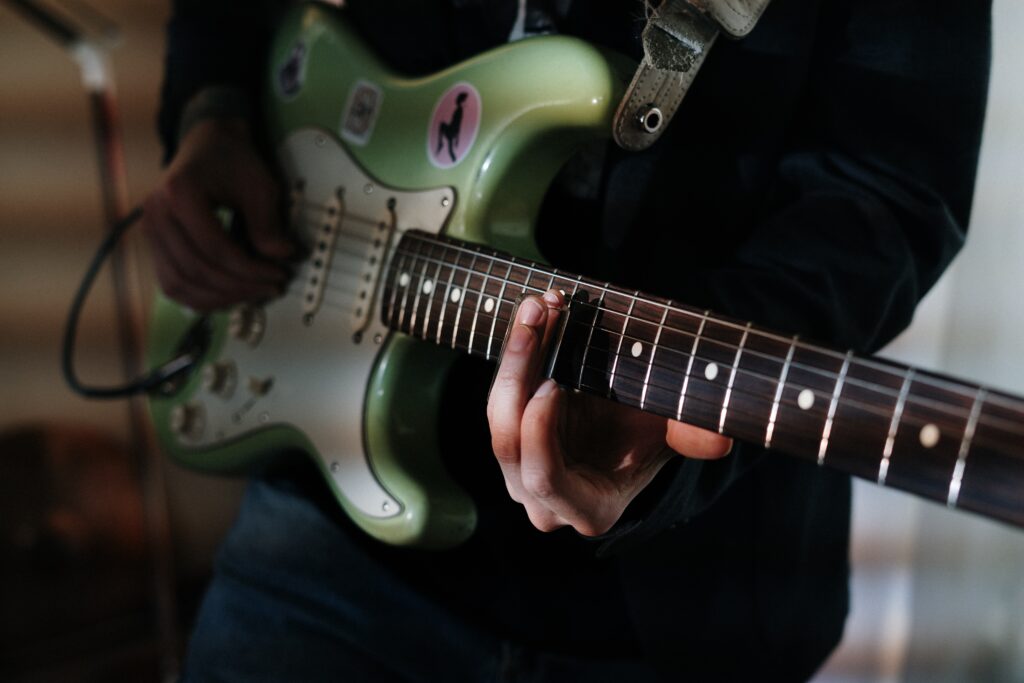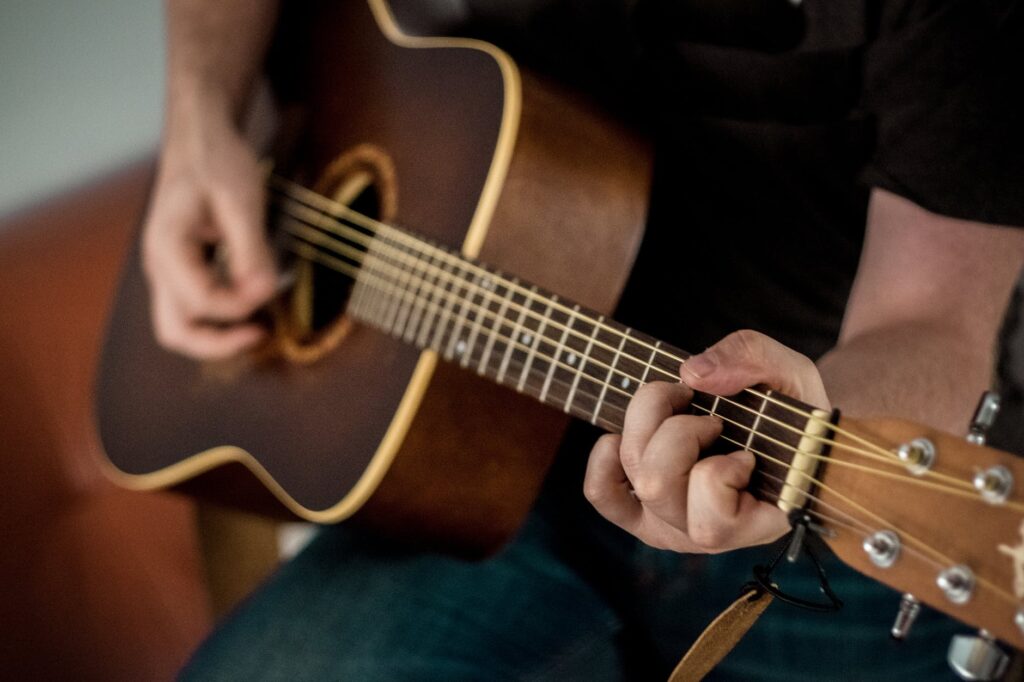
Tips and Tricks for Mastering Pinch Harmonics on Your Guitar
If you’re an electric guitar player, you might have heard of pinch harmonics, or guitar harmonics, as a technique used to create a unique sound that can add depth and dimension to your playing. Pinch harmonics can make your guitar sound like it’s crying, screaming, or wailing, depending on the way you execute them. In this blog post, we’ll explore the basics of pinch harmonics, including what they are, how to execute them, and some tips and tricks to help you master this technique.
For me pinch harmonics did not come natural at all… until they did. And from my experience this is how most guitarists feel. Suddenly it just clicks! So read this guide so you know the theory behind how to do it and then practice and wait for it to click! Be patient and hang in there!
What Are Pinch Harmonics?
A pinch harmonic, also known as a “squealy” or “artificial harmonic,” is a captivating guitar playing technique that produces a high-pitched, resonant overtone. It involves creating a harmonic sound by lightly grazing the string with the thumb or the side of the picking hand immediately after plucking the string with a pick or fingers. The result is a unique and piercing tone that has become a hallmark of various guitar-driven genres, especially in rock, metal, and blues music.
The History of Pinch Harmonics/Squealies
The origins of the pinch harmonic can be traced back to traditional playing techniques like natural harmonics. Natural harmonics are produced by lightly touching the string over a fretwire while picking the string, creating pure and bell-like tones at specific nodes. The concept of harmonics has been known for centuries and is evident in the playing of various stringed instruments.
The specific technique of pinch harmonics, as we know them today, gained popularity in the 1960s and 1970s, primarily attributed to rock and blues guitarists experimenting with ways to achieve new sounds and expressiveness on their instruments.
Eddie Van Halen, a legendary figure in the world of rock guitar playing, played a significant role in popularizing the pinch harmonic technique. In the late 1970s and early 1980s, Van Halen’s innovative guitar techniques, including pinch harmonics, stunned the music world. His ability to infuse pinch harmonics into his solos and riffs contributed to his signature sound and influenced countless guitarists worldwide.
Another influential guitarist who played an essential role in establishing the technique’s prominence was Billy Gibbons of ZZ Top. His gritty, blues-infused playing style often incorporated pinch harmonics, further showcasing the technique’s potential for expressing emotions and creating captivating guitar tones.
As rock and metal music gained momentum in the late 20th century, more guitarists adopted the pinch harmonic technique to add intensity and uniqueness to their playing. This led to a surge in experimentation with the technique, giving birth to new sub-genres that relied heavily on its distinctive sound.
Over time, pinch harmonics have become a common feature in guitar solos, especially in heavy metal and hard rock music. Guitarists like Zakk Wylde, Dimebag Darrell, and Steve Vai have further pushed the boundaries of the technique, elevating it to new heights and inspiring subsequent generations of players to incorporate pinch harmonics into their musical repertoire.
How to Play Pinch Harmonics
To execute a pinch harmonic, you’ll need to use a specific picking technique and placement of your fretting hand. Here’s how to do it:
Step 0:
Adjust Your Guitar Setup (Optional) While not strictly necessary, some guitarists find certain setups more conducive to producing pinch harmonics. You can experiment with the following adjustments:
- Raise the Bridge Pickup: If your guitar has adjustable pickups, slightly raising the bridge pickup can increase the harmonic response, making it easier to achieve pinch harmonics.
- Use a Distortion or Overdrive Pedal: A bit of distortion or overdrive can enhance the sustain and clarity of pinch harmonics, making them more pronounced.
Step 1:
Find the Right Contact Point The key to executing pinch harmonics successfully lies in finding the right contact point on the string. It is generally located around 1/4th or 1/3rd of the way from the bridge toward the neck. You’ll need to experiment with different positions to find the sweet spot on your guitar.
Step 2:
Hold the Pick at an Angle To produce pinch harmonics effectively, hold your pick at a slight angle compared to regular picking. This angle helps facilitate the contact between the thumb and the string after the pick attack.
Step 3:
Pluck the String Begin by picking the string using your preferred picking technique (downstroke or upstroke) with your pick. For beginners, it’s easier to start with downstrokes.
Step 4:
Touch the String with Your Thumb Immediately after picking the string, lightly touch the string with your thumb or the side of your picking hand at the predetermined contact point. The touch should be brief and gentle, creating a quick harmonic “squeal” effect.
Step 5:
Step 5:
Experiment with Pressure and Angle The amount of pressure applied by your thumb and the angle of attack are crucial factors in controlling the pitch and intensity of the pinch harmonic. Play around with different pressures and angles to discover the range of sounds you can achieve.
Step 6:
Use String Muting To maintain clarity and prevent unwanted string noise, use the palm of your picking hand to lightly touch the strings you’re not playing. This muting technique ensures that only the desired harmonic resonates cleanly.
Step 7:
Practice, Practice, Practice! Learning to play pinch harmonics requires practice and patience. Start by experimenting with different pick angles, thumb placements, and pressures until you begin to consistently produce pinch harmonics. As you become more comfortable, try incorporating them into your solos and riffs to add expressiveness to your playing.
Step 8:
Listen and Analyze Listen carefully to the sounds you create and analyze your technique. Pay attention to the nuances in pitch and tone and adjust your approach accordingly. Learning from your own playing is one of the most effective ways to improve your pinch harmonic technique.
Placement of Your Fretting Hand
To create pinch harmonics, the placement of your fretting hand is crucial. The harmonic will sound best if you place your fretting hand over the pickup of your guitar. This is where the string vibrates the most, and where the harmonic overtone will be the loudest.
Tips and Tricks for Mastering Pinch Harmonics
Here are some tips and tricks to help you master pinch harmonics on your electric guitar:
- Experiment with pick placement: The placement of your pick can affect the sound of your pinch harmonics. Try picking closer to the bridge or closer to the neck to find the sweet spot for your guitar.
- Use distortion: Pinch harmonics sound best when played through an overdriven or distorted amp. The distortion will enhance the harmonic overtone and make it more prominent in the mix.
- Practice slowly: Pinch harmonics can be tricky, so don’t be afraid to start slow. Practice the technique slowly and gradually increase your speed as you get comfortable with it.
- Experiment with different strings: Different strings can produce different harmonics. Try experimenting with different strings to find the ones that produce the sound you’re looking for.
Common Mistakes to Avoid
- Pressing too hard: Remember, pinch harmonics require a very light touch. If you’re picking too hard with your picking hand, you won’t be able to create the harmonic overtone.
- Picking too hard: Similarly, if you’re picking too hard with your picking hand, you won’t be able to create the harmonic overtone. Make sure your pick stroke is light and precise.
Putting It All Together
Now that you know the basics of pinch harmonics, it’s time to put them into practice. Start by practicing slowly and gradually increase your speed as you get more comfortable with the technique. Experiment with different strings, pick placements, and distortion settings to find the sound that works best for you.
Remember that pinch harmonics are not easy to master, but with practice and patience, you can achieve a unique and beautiful sound on your electric guitar.
In conclusion, pinch harmonics are a fantastic technique to add to your repertoire as an electric guitar player. With the right technique, placement of your fretting hand, and some practice, you can achieve a unique sound that will make your playing stand out. So, grab your guitar, start practicing, and have fun exploring the world of pinch harmonics!

